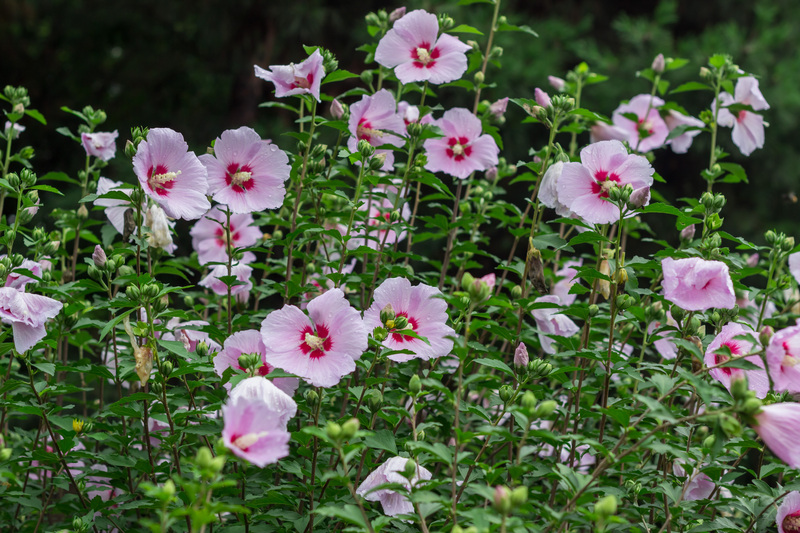Gain Control Over Wind Impact with These Garden Tips
Posted on 21/09/2025
Gain Control Over Wind Impact with These Smart Garden Tips
Do gusty winds wreak havoc in your beautiful outdoor oasis? Are your tender plants suffering, or do you worry about erosion and damage every time a storm rolls in? Gaining control over wind impact in the garden is essential for thriving greenery, healthier soil, and a more enjoyable outdoor experience. In this comprehensive guide, we'll reveal proven strategies to minimize wind damage, protect your plants, and create a resilient garden sanctuary.

Understanding Wind's Effects in the Garden
Before diving into solutions, it's important to grasp how wind influences your garden:
- Physical Damage: Strong winds can break branches, topple weak plants, and damage flowers.
- Desiccation: Wind increases water evaporation from leaves and soil, leading to dehydration and stress for plants.
- Soil Erosion: Persistent breezes can strip away topsoil, exposing roots and depleting nutrients.
- Pest and Disease Spread: Winds can carry pests and spores, potentially spreading infestations or diseases.
- Pollination Issues: Excessive airflow may hinder pollination by interrupting insect activity or dispersing pollen erratically.
By understanding these problems, gardeners gain the insight needed to implement targeted wind control measures.
Assess the Wind Pattern in Your Garden
To manage wind effects in your garden, start by mapping out the typical wind direction and strength at different times of the year. Here's how:
- Observe the Landscaping: Note which areas are most exposed and where natural barriers exist.
- Check Plant Growth Patterns: Leaning plants or damaged leaves can signal prevailing wind directions.
- Use Weather Tools: A simple weather vane, anemometer, or even wind apps can help track speed and direction.
- Review Local Data: Your local weather service may provide wind rose diagrams highlighting predominant wind channels in your region.
The more precise your assessment, the smarter your wind protection plans will be.
Smart Landscape Design to Minimize Wind Damage
1. Layered Windbreaks: Your First Line of Defense
Installing windbreaks in your garden is one of the most effective strategies for controlling wind impact. A good windbreak slows and filters air rather than completely blocking it, which prevents turbulence.
-
Living Windbreaks:
- Trees and Shrubs: Rows of evergreens or closely planted deciduous trees can provide year-round shielding. Species like arborvitae, pine, privet, and holly are popular choices.
- Hedges: Dense hedges of boxwood, laurel, or photinia create a beautiful, functional screen.
-
Artificial Windbreaks:
- Fencing: Permeable fences, such as those made from louvered wood, bamboo, or mesh, disperse wind more gently than solid panels.
- Trellises with Climbing Plants: Trellises support vines (like clematis or wisteria) that offer living wind moderation and aesthetic value.
Placement Tips:
- Set windbreaks perpendicular to prevailing winds for maximum effect.
- Plant windbreak rows several feet apart, with taller plants on the windward side and shorter shrubs behind.
- Leave some gaps (no more than 20-25% open space) to reduce wind vortexes and prevent sudden gusts reaching your plants.
2. Take Advantage of Structures and Hardscaping
Strategically placed garden sheds, gazebos, pergolas, and retaining walls can further help reduce wind impact in your outdoor space. Arrange seating, outdoor kitchens, or delicate plant groupings in safer, wind-sheltered zones created by these structures.
3. Create Microclimates for Sensitive Plants
Low or medium height plants can benefit from microclimates:
- Place pots and containers near walls, fences, or beneath tree canopies for enhanced protection.
- Grow veggies and tender perennials in sunken beds or behind raised beds that serve as wind buffers.
- Install temporary hoop houses or cold frames over vulnerable crops during stormy seasons.
Tip: Combining several methods strengthens overall resilience, ensuring little escapes your defenses.
Best Plant Choices for Windy Gardens
If you live in a region constantly battered by breezes, choosing wind-tolerant plants is crucial for garden success.
Tough Trees & Shrubs
- Pines (Pinus spp.)
- Siberian peashrub (Caragana arborescens)
- Black locust (Robinia pseudoacacia)
- Hawthorn (Crataegus)
- Holly (Ilex aquifolium)
- Sea buckthorn (Hippophae rhamnoides)
- Privet (Ligustrum spp.)
- Juniper (Juniperus)
Tough Perennials & Grasses
- Russian sage (Perovskia atriplicifolia)
- Coneflower (Echinacea)
- Lavender (Lavandula spp.)
- Daylily (Hemerocallis)
- Ornamental grasses (Miscanthus, Panicum, Festuca)
- Lamb's ear (Stachys byzantina)
- Sedum (Sedum spectabile)
Establishing wind-hardy plants in exposed areas can add a living layer of protection for your more delicate garden specimens.
Plant Arrangement and Support Techniques
1. Stagger Rows and Clusters
Avoid straight lines when planting. Instead, arrange groups in staggered rows or clusters to help diffuse wind and reduce erosion. Natural groupings act like mini windbreaks within the bed.
2. Anchor Tall or Top-Heavy Plants
For any tree saplings, sunflowers, or tall perennials:
- Install sturdy stakes, tie securely with soft ties (such as garden twine or cloth strips).
- Check supports frequently--especially after storms--to prevent girdling or topple damage.
- Where possible, earth up around the base of young plants for extra root anchorage.
3. Mulch and Groundcover for Soil Protection
To minimize soil erosion from wind:
- Apply a thick layer (2-4 inches) of organic mulch around beds and base of new plantings.
- Incorporate fast-spreading groundcovers (such as creeping thyme, ajuga, or clover) to form a living carpet that holds soil in place.
Remember: Mulch also retains soil moisture to combat wind drying effects.
Temporary and Seasonal Wind Protection Solutions
Besides permanent features, short-term wind control options can be invaluable during extreme weather or plant establishment periods:
- Garden Fabric / Burlap Screens: Drape breathable fabric or burlap around tomato cages, small fruit trees, or seedbeds during heavy storms. Anchor with stakes or hoops for stability.
- Pop-up Row Covers or Cloches: Transparent covers shield young seedlings from both wind and cold. Remove as conditions improve to prevent overheating.
- Portable Fencing: Lightweight mesh panels or woven willow screens can be set up as needed, then moved or removed during calm seasons.
Proactively using these barriers can help reduce wind damage to your most vulnerable plants, ensuring they get a healthy start.
Watering and Feeding: Counteracting Wind Desiccation
Plants exposed to wind lose moisture quickly and may need extra care:
Optimal Watering Tips
- Water deeply and less often to encourage strong, deep roots--shallow watering leaves roots vulnerable in breezy conditions.
- Morning or evening watering minimizes evaporation loss to the air.
- Install drip irrigation or soaker hoses to keep moisture at the root zone, reducing spray that can be instantly blown away.
Fertilize for Stress Tolerance
- Apply slow-release granular fertilizers that are less likely to be blown away compared to light powders.
- Avoid high nitrogen feeds that produce lush, soft foliage prone to wind burn--choose balanced or slightly phosphorus-rich products for sturdier growth.
Healthy, well-nourished plants are naturally more wind-resistant and less likely to succumb to pest or disease problems often exacerbated by stress.
Pruning and Maintenance: Encouraging Wind-Resilient Growth
Regular garden care is key for reducing wind damage:
- Prune Trees and Shrubs: Remove dead or damaged branches and thin overcrowded growth to reduce wind resistance, prevent breakage, and encourage sturdy structure.
- Inspect for Damage: After storms, check for snapped stems, bent scaffolds, or exposed roots and address issues promptly.
- Tie or Support As Needed: Double-check fastenings and replace any that are fraying or too tight.
Proactive maintenance greatly increases your garden's ability to withstand high winds year-round.
Innovative Solutions: Wind-Friendly Garden Art & Accessories
Not all wind-fighting features are purely functional--some can be decorative as well!
- Wind Chimes, Spinners, and Sculptures: Hung in open areas, these features both express your personal style and gently disrupt wind flow.
- Decorative Screens: Laser-cut metal, woven willow, or decorative trellis panels double as art and airflow moderators. Choose designs with 20-30% open space for best results.
- Raised Beds: Stone or wood raised beds with solid sides protect soil and lower plants from direct wind, especially in exposed locations.
A fusion of form and function will not only help control wind in your garden but add beauty and interest for year-round enjoyment.

Frequently Asked Questions about Wind in the Garden
Q: Can I completely block wind in my garden?
A: It's better to slow and filter wind than to block it entirely. Solid walls cause turbulence and may worsen damage when gusts get around them. Well-designed windbreaks deflect and diffuse air gently.
Q: When is the best time to plant windbreaks?
A: Late fall or early spring--before growth begins--gives roots time to establish before strong seasonal winds arrive.
Q: Which direction should windbreaks face?
A: Perpendicular to your area's prevailing winds--often west or northwest in temperate zones.
Q: Are there quick fixes for sudden storms?
A: Temporary fabric barriers, portable screens, or even upturned wheelbarrows can shield precious plants in emergencies.
Conclusion: Mastering Wind Management for Garden Success
Gaining control over wind impact in your garden is entirely possible--with thoughtful design, smart planting choices, and proactive care. Whether you incorporate windbreaks, resilient species, strategic plant supports, or beautiful screens, each step helps secure your outdoor space against nature's bluster.
Start by assessing your garden, combine permanent and temporary solutions, and enjoy a more abundant, less stressful growing season. Your plants--and your gardening peace of mind--will thank you!
Ready to bring calm to your windy garden? Share your biggest wind challenges or favorite solutions below--let's grow stronger, together.

